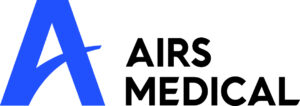Authors
Matthew J.Muckley*,1,Member, IEEE, Bruno Riemenschneider*,2, Alireza Radmanesh2, Sunwoo Kim3, Member, IEEE, Geunu Jeong3, Jingyu Ko3, Yohan Jun4, Hyungseob Shin4, Dosik Hwang4, Mahmoud Mostapha5, Simon Arberet5, Dominik Nickel6, Zaccharie Ramzi7,8, Student Member, IEEE, Philippe Ciuciu7, Senior Member, IEEE, Jean-Luc Starck8, Jonas Teuwen9, Dimitrios Karkalousos10, Chaoping Zhang10, Anuroop Sriram11, Zhengnan Huang2, Nafissa Yakubova1, Yvonne W.Lui2, and Florian Knoll2, Member, IEEE
*. Equalcontribution.
1. Facebook AI Research, New York, NY, USA
2. NYUSchool of Medicine, New York, NY, USA
3. AIRS Medical, Seoul, South Korea
4. Yonsei University, Seoul, Korea
5. Siemens Healthineers, Princeton, NJ, USA
6. Siemens Healthcare Gmb H, Erlangen, Germany
7. CEA(Neuro Spin) & Inria Saclay (Parietal), Universit´eParis-Saclay, F91191 Gif-sur-Yvette, France
8. D´epartementd’ Astrophysique, CEA-Saclay, 91191 Gif-sur-Yvette, France
9. Radboud University Medical Center, Nijmegen, Netherlands
10. Amsterdam UMC, Amsterdam, Netherlands
11. Facebook AI Research, Menlo Park, CA,USA
Accelerating MRI scans is one of the principal outstanding problems in the MRI research community. Towards this goal, we hosted the second fastMRI competition targeted towards reconstructing MR images with subsampled k-space data. We provided participants with data from 7,299 clinical brain scans (de-identified via a HIPAA-compliant procedure by NYU Langone Health), holding back the fully-sampled data from 894 of these scans for challenge evaluation purposes. In contrast to the 2019 challenge, we focused our radiologist evaluations on pathological assessment in brain images. We also debuted a new Transfer track that required participants to submit models evaluated on MRI scanners from outside the training set. We received 19 submissions from eight different groups. Results showed one team scoring best in both SSIM scores and qualitative radiologist evaluations. We also performed analysis on alternative metrics to mitigate the effects of background noise and collected feedback from the participants to inform future challenges. Lastly, we identify common failure modes across the submissions, highlighting areas of need for future research in the MRI reconstruction community.


